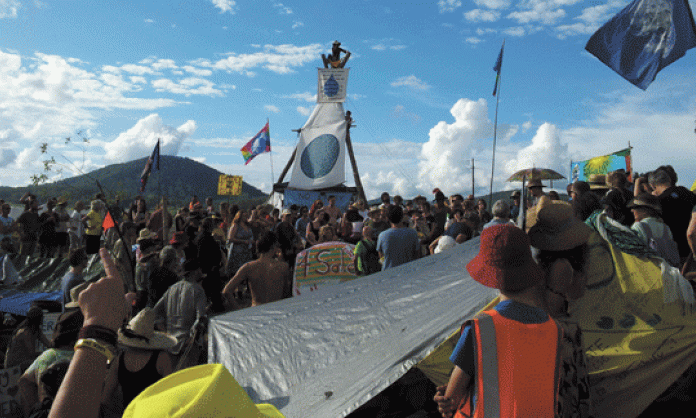Battlelines are being drawn in one of rural Australia’s largest environmental campaigns since the fight against the Jabiluka uranium mine almost 20 years ago.
On one side, you have the Murdoch press, large mining company Metgasco and its army of thugs in the New South Wales police. All are determined to see the gas exploration go ahead and are sparing no expense. Reports suggest that the police have a budget of $8 million and 600 officers on stand-by.
On the other side, you have environmentalists, local farmers, and others who live in the surrounding area. Many have never been to protests before in their lives, but they recognise the danger posed to both the planet and their community by gas mining.
A protest camp in Bentley, in northern New South Wales, set up to oppose gas exploration, has mobilised more than 2,000 people at short notice for emergency actions.
The protesters fear that this exploration could lead to profitable deposits of coal seam gas (CSG) being discovered. CSG is methane adsorbed into coal beds. It is harvested by drilling deep into the ground and then pumping in highly pressurised water in order to crack the coal seams, allowing the gas to come to the surface. The process is called hydraulic fracturing, or fracking.
Fracking creates waste water underground, which can lubricate existing fault lines and increase the chance of earthquakes. The United States Geological Survey has linked several tremors to fracking and has stated that it cannot rule out fracking causing larger earthquakes in the future.
Another fear is that cost-cutting will result in methane seeping out of the CSG wells and into the local water supply. In the US, several fracking companies have gone into liquidation to avoid costly cleanup bills. While the owners laugh their way to the bank with assets that they stripped from the companies, water is left so polluted with methane that it looks fizzy and can be set alight.
A final concern is that it isn’t just water that’s pumped into the CSG wells – other chemicals are also used, including known carcinogens.
Part of the problem is that so little is known about the longer term environmental impacts of fracking. With scientific research institutions such as universities and the CSIRO coming under attack or becoming more reliant upon corporate funding, it’s unlikely that critical research will be funded.









